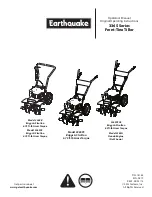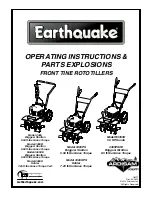
Installation, Start-Up, Adjustment and Maintenance Manual
54
6.2 GAS PRESSURE ADJUSTEMENT
The manufacturer supplies the units already adjusted for a particular type of gas. The type of gas can be
checked and easily identified by looking at the marking label inside the unit. Nevertheless, before starting the
unit it is necessary to check and adjust if necessary the Gas Input (HHV) to the burner. Using the table
below, arrange the proper manifold pressure according to the local gas heating value (BTU content per cubic
foot) and specific gravity. This table is based on the correct natural Gas Input (HHV) for the model by
manifold pressure in inches of water column (in WC).
SPECIFIC GRAVITY OF NATURAL GAS
MJ CONTENT
PER CU.Meter
BTU CONTENT
PER CU.FT.
0,55 0,6 0,65 0,7
35,40 950 2,81 3,07 3,33 3,58
36,33 975 2,67 2,91 3,16 3,40
37,26 1000 2,54
2,77 3,00 3,23
38,19 1025 2,42 2,64 2,86 3,08
39,12 1050 2,30 2,51 2,72 2,93
40,05 1075 2,20 2,40 2,60 2,80
40,98 1100 2,10 2,29 2,48 2,67
41,92 1125 2,01 2,19 2,37 2,55
Nostro
riferimento:
SPECIFIC GRAVITY OF NATURAL GAS
MJ CONTENT
PER CU.Meter
BTU CONTENT
PER CU.FT.
0,555
37,78 1014
2,5
Table 20
- MANIFOLD PRESSURE BASED ON GAS INPUT (HHV) OF 94,900 Btu/hr USING 0.21” ORIFICE.
The conditions referred to by the table above are for the guidance of the installer and the CSA design
certification does not cover the conditions described therein.
Note: For Propane Gas Models, follow the same instructions as given for natural gas. The manifold pressure
for propane gas should be 4.8” W.C. and adjustment is made at the gas valve regulator. Manifold pressure at
94,900 Btu/hr. input using 0.14” orifice.
GAS TYPE
NATURAL GAS
LP GAS
MANIFOLD PRESSURE
2.5 WC Inches
4.8 WC Inches
NOZZLE DIAMETER
0.21” 0.14”
Table 21
- MANIFOLD PRESSURE AND NOZZLE DIAMETER
PRESSURE ADJUSTMENT PROCEDURE
1. Turn main gas valve knob to the “OFF” position.
2. Remove the plug on Outlet end of gas valve and attach pressure tap and manometer.
3. Turn power “ON,” and close control switch.
4. Wait for the burner to start up. Due to the presence of air inside the piping, it may be that the burner
does not start at the first three attempts and failing to do so the ignition system is locked out. If this
happens reset the ignition system (see dedicated procedure, end of Appendix). Repeat until all the air is
purged from the piping and the burner ignites.
5. When the burner ignites read the manometer and compare to the required pressure in
Table 20
.
















































